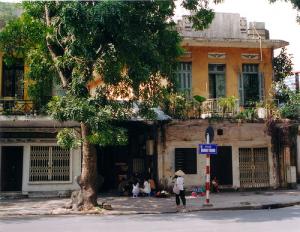Architects Gather Ideas from Public to Bring Back the French Quarter

A town with a rich and fascinating architectural heritage, Hanoi manages to be both exhilarating and enchanting. Built by French colonists in the late 19th century, the French Quarter creates an image of Paris in Hanoi and is a popular part of the capital. After so much time have passed and after many Vietnamese have started to embrace the allure of the modern era, the charm of what used to be an entirely French town is slowly fading.
The years did so much damage to the structures that authorities realized it’s about time to start picking up efforts before these buildings will be reduced to rubbles. Currently, except for a few works like the Hanoi Opera House and the Metropole Hotel, other villas have been critically degraded. Local households who had renovated most parts of their house to prevent it from pulling apart underwent repairs.
Institut des Métiers de la Ville (IMV - the Cooperation Center for Urban Development) recently did a survey and found that much of the portions removed which contains the French character were also replaced with newer materials without regard for keeping the old design. With how much restoration could cost, there is not much an average Vietnamese could do but renovate their homes to the most cost-effective way, even if it means replacing the French look with what is available, or more so, what they can afford. Authorities are making moves to restore the major structures to preserve the French Quarter.
The Hanoi Department of Architectural Planning is drafting a regulation on managing the French Quarter in Hanoi. The draft, built with the assistance of the IMV, aims to preserve and promote the values of the French Quarter and to put forward measures to ensure the effective management, conservation and development of the works. In the same draft, strict regulations are proposed as well as options for works to be built to ensure that new buildings will not adversely affect the general character of the quarter.
According to project officials, more than 400 local villas are now in need of being restored and preserved. To preserve the other buildings and to restore the frontage of old works, they are proposing that people should remove the modified parts and only allow them to build at the rear portion of those houses in accordance with certain criteria to guarantee that newly built parts don’t affect the houses’ basic architecture.
The draft statute is now being displayed for a specified time at Gallery No.93 on Dinh Tien Hoang Street with questionnaires in English, French and Vietnamese for the public to fill in. People are welcome to submit ideas to the restoration proposal everyday, of which, all will be reviewed and added to the draft.









